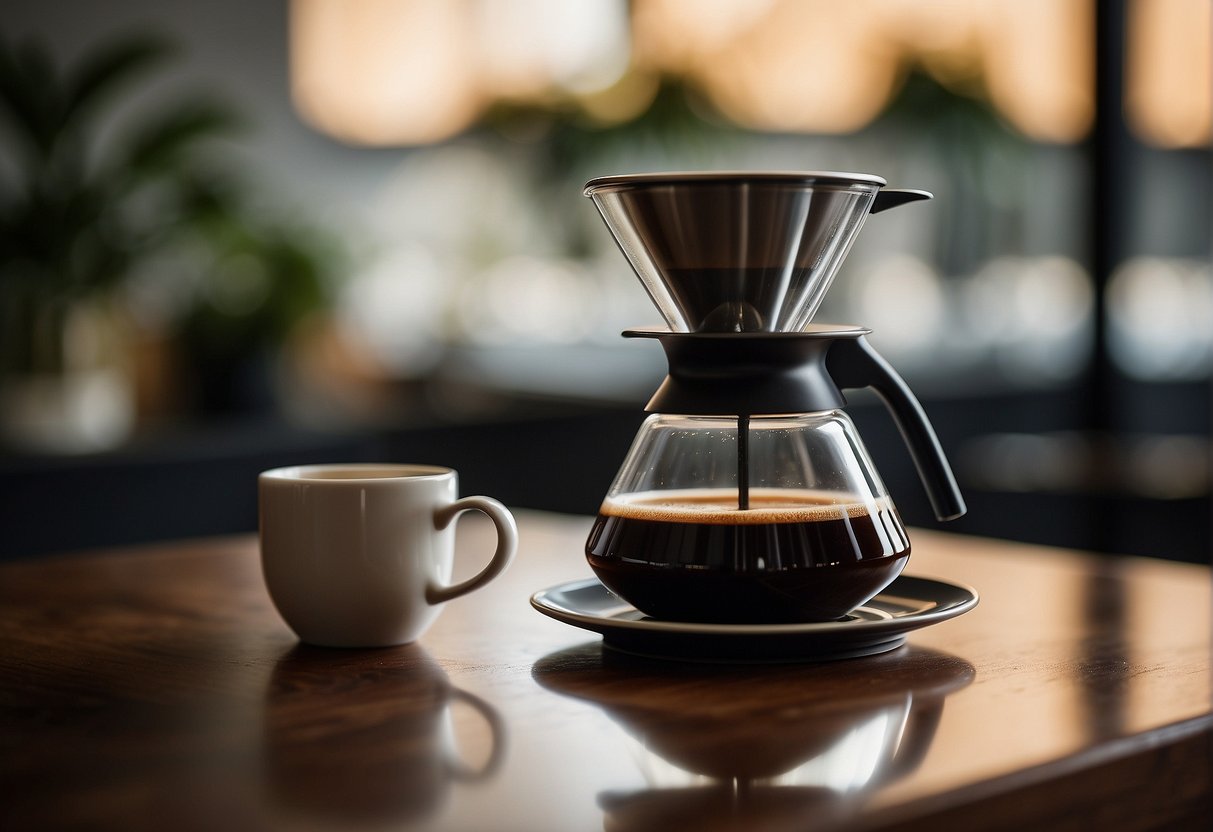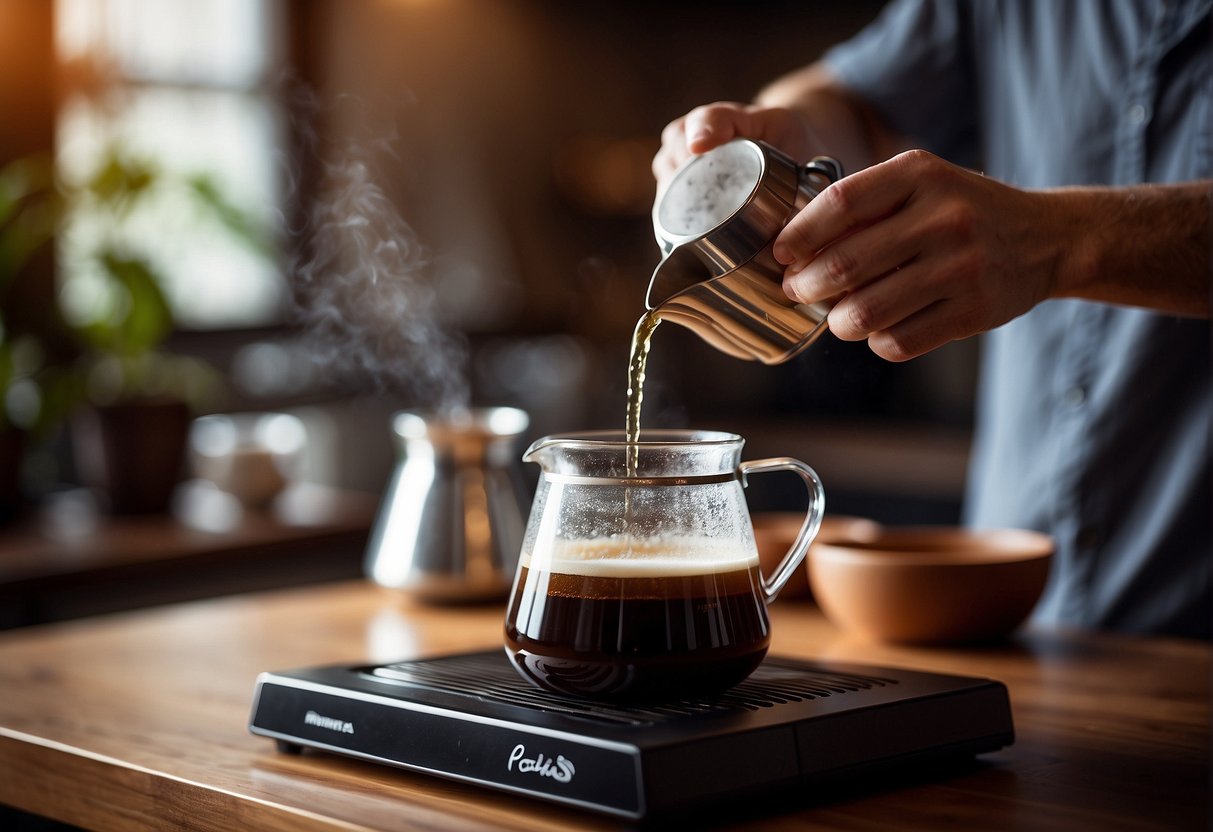Pour over coffee enthusiasts often find themselves comparing the merits of the Hario V60 and Melitta filter cones, two prominent methods for brewing coffee. The Hario V60, with its distinctive design and specialized filter paper, is favored for its ability to enhance coffee’s flavor profile through precise control over the brewing process. Originating in Japan, the Hario V60 has gained international acclaim among coffee aficionados for its role in facilitating a meticulous pour over technique.

On the other hand, Melitta, a pioneer in the world of coffee brewing, offers a user-friendly approach with its filter cone system that has stood the test of time. The Melitta cone is well-regarded for its practicality and consistent results, making it a beloved choice for everyday coffee drinkers. While maintaining a less complex brewing mechanism, the Melitta approach delivers a clean and flavorful cup that caters to those who appreciate simplicity and reliability in their coffee brewing ritual.
Both methods share the common goal of producing a high-quality cup of coffee by allowing water to pass through coffee grounds, but they differ in their design, technique, and the subtleties of taste they elicit. The comparison of Hario V60 and Melitta can influence preferences based on brewing precision, ease of use, and the desired characteristics in the final cup of coffee.
History and Evolution
https://www.youtube.com/watch?v=sozf-TiDU98&embed=true
The history of pour over coffee is marked by innovation and competition, particularly between Hario and Melitta, whose contributions have significantly shaped today’s coffee brewing culture. This section explores the origins of pour over brewing and the distinct impacts each brand has made in this beloved method.
The Rise of Pour Over Coffee
Pour over coffee’s ascent to popularity began with coffee enthusiasts seeking a more hands-on approach to brewing, valuing precision and flavor clarity. The manual method allowed for customization of brewing time and temperature, leading to a more artisanal experience.
Hario’s Impact on the Coffee Scene
Hario, established in Japan in 1921 and initially a manufacturer of heatproof glass, entered the coffee scene later. The development of their Hario V60 coffee dripper significantly influenced pour over brewing. The V60’s distinctive design, incorporating spiral ribs and a large single hole, allows for optimal coffee extraction and a remarkably fine-tuned brewing process.
Melitta’s Legacy in Filter Coffee
Melitta Bentz revolutionized the coffee world in 1908 by inventing the first paper coffee filter, laying the foundation for modern filter coffee. It was in the 1930s that Melitta introduced the cone-shaped filters, improving coffee quality by increasing the extraction area. The Melitta filter has become a staple in households world over, maintaining a lasting legacy in the realm of coffee brewing.
Design and Aesthetics

In the world of pour-over coffee, the visual appeal and material design of the brewing equipment are nearly as important as the quality of the coffee they produce. The Hario V60 and Melitta filter systems stand out not just for their brewing capabilities, but also for their distinctive design elements that blend function with aesthetics.
Hario V60: Glass, Ceramic, and Plastic Variants
The Hario V60 is celebrated for its iconic conical shape and spiral interior, which contribute to its efficient brewing process. It is available in glass, ceramic, and plastic variants, catering to a diversity of tastes and preferences. The glass model boasts transparency that allows coffee enthusiasts to appreciate the brewing process, while the ceramic version retains heat well. The plastic variant is durable and lightweight, making it an ideal choice for those prioritizing practicality without compromising on style.
Melitta Filter Systems: Aesthetic and Practical Design
On the other hand, Melitta filter systems display a simple elegance with their practical design. Traditionally crafted in plastic and now also available in porcelain, the Melitta filters offer a more approachable look compared to the V60. Their design is straightforward, focusing on functionality with a no-frills aesthetic. The approachable and utilitarian nature of the Melitta design does not detract from its ability to produce a high-quality cup of coffee.
Comparing Form Factors
When comparing the form factors, Hario V60’s pour-over dripper encourages a precise pour and even extraction, highlighting its commitment to excellence. In contrast, Melitta’s design is more forgiving, requiring less precision, which appeals to a broad user base. Both systems are celebrated in the coffee community, but they cater to different users’ needs — Hario aligns with those who appreciate a meticulous brewing process, while Melitta resonates with users seeking simplicity and reliability.
Brewing Techniques and Taste

In the realm of pour-over coffee, subtle differences in brewing techniques and the tools used can greatly influence the final cup’s taste. Two popular methods, Hario and Melitta, have distinct approaches to filtration and extraction that coffee enthusiasts debate vigorously.
The Role of Filter Choice
In pour-over coffee making, the type of filter plays a crucial role in flavor extraction. Hario typically employs conical, thin paper filters that promote a faster brew and more clarity in the cup. Melitta, on the other hand, offers slightly thicker paper filters which may slow down extraction, allowing more oils and flavor to be retained. Factors such as filter shape and material significantly impact the extraction process and the resulting aromatics and body of the coffee.
Extraction Science in Pour Over Brewing
Extraction is the process where water dissolves and carries flavors from the coffee grounds. Hario’s V60 brewer is known for its spiral ridges inside the cone, facilitating air flow and an even extraction as water pours in a consistent spiral pour pattern. This method ideally produces a clean, nuanced taste. Melitta’s filter cones do not possess these ridges, potentially accommodating a different extraction dynamic that could yield a richer body due to longer water-to-coffee contact time.
Taste Test: Hario vs Melitta
When subjected to a taste test, the Hario often reveals a more delicate flavor profile with pronounced acidity and varied tasting notes. In contrast, the Melitta method may present a cup with a heavier mouthfeel and fuller flavor, potentially appealing to those who savor a bold brew. It’s not a matter of superiority but preference, as both methods are capable of producing an exceptional coffee experience.
Usability and Convenience
When considering Hario and Melitta pour-over coffee makers, consumers prioritize ease of use, maintenance simplicity, and portability. Both brands have their nuances in these areas, impacting the user’s daily coffee brewing experience.
Ease of Use Factors
Hario offers a variety of pour-over devices, with the Hario V60 being prominent for its design that allows for a customized brewing process. Factors like its cone shape, large single hole at the bottom, and spiral ribs make the V60 a tool for those who appreciate a hands-on approach to brewing and an ability to control the extraction process. On the other hand, Melitta pour-over systems utilize a more straightforward, less technique-sensitive design, often with a comfortable handle and multiple smaller holes at the bottom, which can provide consistent results with ease for users at all skill levels.
Cleaning and Maintenance: Dishwasher Safety
For both Hario and Melitta, cleaning is crucial in maintaining the quality of the coffee. Most of their equipment is dishwasher safe, which simplifies maintenance. Still, particular attention should be given to materials; for example, Hario’s glass and ceramic drippers demand more careful handling compared to Melitta’s plastic counterparts. Users prefer to know that their coffee devices are easy to clean, which can often be as simple as a routine rinse under hot water or placing it in the dishwasher.
Travel and Office-Friendly Options
Coffee enthusiasts often seek convenience that aligns with their on-the-go lifestyle. For those who need travel-friendly options, products like the compact and durable Kalita Wave Stainless 185 Dripper and fold-down drippers like the Pourigami, which is compatible with Hario 02 and Origami filters, cater to this need. They are designed to fit various cups and are easy to carry, making them suitable for travel or office use. It’s worth noting that a comfortable handle is not typically a feature of these travel-friendly models, as they’re designed for compactness and portability.
Accessories and Equipment
When brewing coffee with either Hario or Melitta systems, the quality of the brew can be greatly influenced by the accessories and equipment used. Specific tools can enhance the precision of the brewing process and the eventual taste of the coffee.
Gooseneck Kettles: Precision Water Delivery
The gooseneck kettle is a pivotal tool for pour-over coffee brewing. Its long, slender spout allows for accurate and controlled water flow, which is crucial for achieving even extraction. Hario offers its own line of gooseneck kettles designed to partner with its V60 brewers, matching the aesthetic and functional needs of the equipment.
Coffee Grinding for Optimal Extraction
The grind size and consistency directly affect the surface area exposed to water, thus influencing the extraction rate. For this reason, a reliable coffee grinder is key. Both Hario and Melitta recommend burr grinders over blades for a uniform grind. Precision in grinding is a pillar of their brewing philosophy, ensuring optimal flavor from the coffee beans.
Essential Extras: Scales, Timers, and Carafes
- Scales: A digital scale with a timer ensures that the coffee-to-water ratio and brew time are precise.
- Timers: Timers can be standalone or integrated into scales, helping to track the brewing time accurately.
- Carafe: A quality carafe maintains the temperature of the coffee once brewed. Both brands offer carafes made of materials like glass or stainless steel, designed for heat retention and durability.
Each of these accessories plays a role in refining the pour-over method, enhancing the ritual, and achieving a superior cup of coffee with your brewing equipment.
